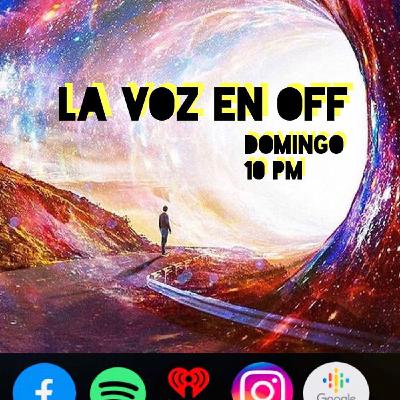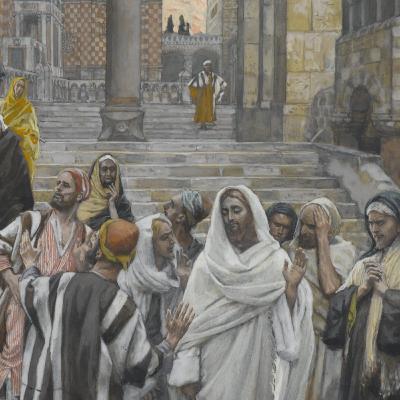Discover The Catholic Brothers
The Catholic Brothers

The Catholic Brothers
Author: Steven & Daniel Alspach
Subscribed: 31Played: 1,342Subscribe
Share
© Steven & Daniel Alspach
Description
After 15 years of Protestantism and almost a decade of early Christian studies in academia, these two brothers and reverts to the Catholic faith make the Bible, History, and Theology entertaining, educational, and accessible for a general audience.
62 Episodes
Reverse
In this episode on Liturgy in the second century, we resume our journey of reconstructing and envisioning early Christian worship.
In this episode on Liturgy in the second century, we resume our journey of reconstructing and envisioning early Christian worship. In Part 1, we focus on change and continuity with regard to the (1) location, (2) timing, and the (3) “shape” that the Eucharistic gathering is taking in this post apostolic era.
You won’t want to miss this one!
In this second part of our episode on women in early Christian communities we address the question of whether or not females served as presbyters. A timely topic, to be sure, as modern events like the Synod on Synodality continue to see this question bubble up to the top of the debates. But putting aside modern preoccupations and concerns, as historians, let’s really take a good look at the evidence, context, and preoccupations of the second century Christians.
Our personal evaluation of Pope Benedict XVI, especially with regard to his impact on culture, the Church, and our own journey from Protestantism to Catholicism.
Did the early Christian movement have women in prominent leadership roles? What sorts of functions did women perform within the communities? Who are some influential women of the first and second centuries? These questions and more are tackled in part 1 of our episode on women in the early church.
Join us for a quick discussion about how early stories of martyrdom reveal what the first Christians believed about the Eucharist. Are the seeds of later Catholic theology to be found here?
Is the religion of the Old Testament strictly monotheistic, or was monotheism an innovation of a much later era in the history of religion? Is the Christian Trinity an amalgamation of paganism and Judaism, or is Trinitarianism thoroughly rooted in the tradition of Israelite religion? In this episode we first examine the foundations for Divine “Plurality” in the history of Israelite thought, and then we take a look at how increasingly diverging conceptions of the Godhead between rabbinical Judaism and emergent Christianity in the second century set the stage for the two sister religions to part ways.
If Christianity began as a Jewish sect, then when did Judaism and Christianity become distinct religions? What drove the separation? Does “Judaism”— as we know it today— really predate Christianity? In this intriguing discussion, the Brothers address these questions and more. You won’t want to miss this one!
The scholarly consensus, by far, is that the Roman Church in the early second century *did not* have a single bishop but was ruled by a collection of presbyteral bodies. This would seem to undercut the Catholic Church’s claim that the pope is the successor of St Peter, let alone Vatican 1’s teaching on papal infallibility. Drawing upon their work in previous episodes, and a careful examination of the ancient sources, the Brothers present an alternative thesis which challenges the prevailing narrative of Protestant and secular scholars.
Christians have always worshipped on Sunday morning, right? In this episode, the Brothers tackle a fascinating, and often baffling, question about the earliest Christians: when did they celebrate the Eucharist each week? Did they observe the Sabbath? If so, when did Christians start worshipping on Sunday, and why? Answering these questions reveals A LOT about the character and theology of the second century Church. You won’t want to miss this one!
Catholic art portrays the crucifixion differently from painting to painting. Early Roman sources describe many different ways that a man could be crucified. So, what did Jesus’ crucifixion really look like? Join us as we examine textual, epigraphic, and artistic depictions from the early church portraying the crucified Jesus and examine those side by side with the Shroud of Turin and Roman sources. A FASCINATING TOPIC to add color to your Holy Week devotions !
The rise of Christianity in Late Antiquity was met by the rise of another phenomenon in the Roman Empire: Amphitheater violence. For St. Ignatius, hearer of John the Apostle and Bishop of Antioch, this coincidence proved deadly. Join the brothers as they discuss the Passion of St. Ignatius of Antioch and it's broader significance in the development of Christian identity in the Roman world.
Ever wanted to take your prayer life to the next level, but didn’t know where to start? Do you struggle to pray often? When you pray, does it feel dry or stale? In this episode we survey the history and meaning of the Church’s highest form of prayer *outside* of the Mass: the Daily Office. Steep yourself in this most ancient form of prayer and watch as your prayer life begins to truly bloom for the first time.
While the papacy has called for a ‘Listening Church,’ a theology of ‘encounter,’ and a Church that is willing to go to the margins, the Brothers here question the appropriateness of Cardinal Cupich’s swift sanctions on Latin Mass communities within the Archdiocese of Chicago, and that, without any dialogue between the faithful and their bishop. The Brothers also offer (1) a side-by-side analysis of the Ordinary and Extraordinary texts of the Roman Rite, (2) a list of common abuses of the Novus Ordo that have prevailed for too long, and (3) a practical guide to brining your own parish’s Novus Ordo in line with the (actual) calls of Vatican 2 and the General Instruction on the Roman Missal.
As the first generation of Christians took up the mantle of apostolic faith, alternative ideas about Jesus began to sprout up around them— ideas which the apostles themselves had to ward off. In this episode, the Brothers introduce us to the first heresy in the Church’s history: Docetism. Consulting the letters of St Ignatius of Antioch and other 1st and 2nd century sources, we begin to discover the earliest, drawn borders of catholic orthodoxy.
In this special episode for the feast of Epiphany, the brothers present the argument for September 11, 3 B.C. being the birth date of Jesus and pinpoint just what it was that the Magi saw in the sky that led them to Bethlehem shortly thereafter. Leaning upon the research of meteorologist Ernest Martin, Dr Michael Heiser, and Fr Stephen DeYoung, the brothers take us on a dense, fascinating journey through the Gospels, the book of Revelation, Old Testament astrology, and a letter of Ignatius of Antioch to tackle that most debated of mysteries: WHAT DID THE MAGI SEE IN THE SKY??
Scholars of Protestant and Secular stripes have cast doubt on the existence of a “Great Church” from the era of the apostles through the history of the early church, opting instead for an early plurality that eventually ossifies into a “Great Church” that suppresses rival Christianities. Here, the brothers directly challenge this telling of the story, insisting that the unity of the Church preceded plurality, as demonstrated in the writings of such figures as Clement of Rome and Ignatius of Antioch. Grab the popcorn!
We made it! Time to begin our journey through Christianity’s second century. In this brief overview, the Brothers offer a preview of topics they will cover in this most fascinating of centuries for the development of the Faith.
What is with all of those references to white garments, two angels, serpent staffs, candle stands, fire, bread from heaven, etc, in the Johannine writings?? In their final, extended Episode on the 1st century Church, the brothers take a fascinating, deep dive into the place of Temple theology in St John’s experience of Jesus. You DO NOT want to miss this one!
As the Vatican continues its development towards “synodality” with a decentralized papacy, many Anglican bishops have found the culmination of their theological journey naturally ending in the other direction: a firm acceptance of the Roman Church’s primacy. The conversion of Bishop Michael Nazir-Ali perhaps marks one of the most significant Anglican conversions of our generation, and he was preceded by at least three other Anglican bishops in just a few short months. What do these conversions mean for Anglicans, for the Ordinariate, and for Rome herself? Here the brothers draw upon their personal history in Anglicanism and draw out the implications of Nazir-Ali’s move to full communion. (Apologies for the audio quality!—we had technical difficulties that required us to use the camera mics this time around)










Hey Steven and Daniel! I just found this podcast. Great stuff!! I'm a protestant considering Catholicism. I'd love to hear more episodes, so keep up the good work. And I heard you guys are originally from the Gary Diocese area. I live in a county of Indiana also in that Diocese. Are you guys still in NW Indiana?